'Breathtaking.' Scientists survey marine preserve off Cape Cod as ban on fishing nears
Even as a new national monument joins the system of parks preserving a desert habitat and indigenous ancestral land in Arizona, researchers here are continuing their exploration of and advocacy for the Northeast Canyons and Seamounts Marine National Monument — another of the nation's newer monuments, and the only marine national preserve in the U.S. Atlantic Ocean.
A team of scientists with the New England Aquarium recently completed an aerial survey of the monument, an approximately 4,913-square-mile area about 130 miles east-southeast of Cape Cod. Described by the scientists as "a biodiversity hotspot," it includes three undersea canyons that are deeper than the Grand Canyon and four seamounts, or extinct volcanoes, that are taller than any mountain east of the Rocky Mountains.
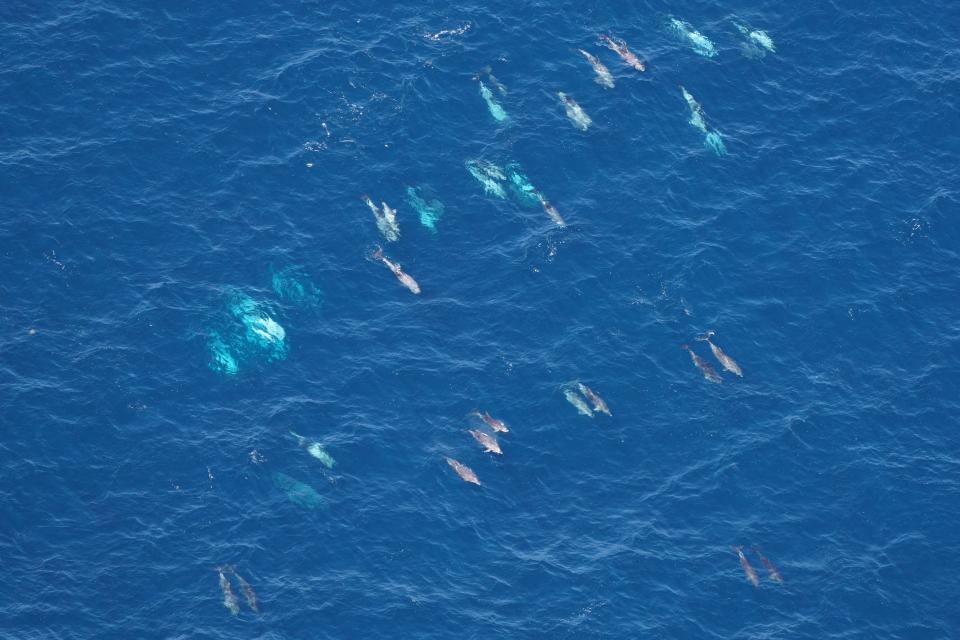
Even though they've been documenting marine mammal biodiversity in the monument since President Barack Obama established the preserve in 2016, the scientists said they are continually amazed by what they are seeing there.
'Every aerial survey flight is breathtaking'
Orla O’Brien, an associate scientist in the aquarium’s Anderson Cabot Center for Ocean Life, said "every aerial survey flight is breathtaking."
“Our photos only scratch the surface of the ocean life that calls this area home," she said.
The latest survey of the monument comes just a few weeks before the area will be completely closed to all commercial fishing. It's already been closed to most commercial fishing since October of 2021, with the exception of American lobster and Atlantic deep sea red crab taken with fixed gear. When the preserve was created, a seven-year moratorium was established for the lobster and crab fisheries, which expires on Sept. 15.
In 2020, the commercial fishing restriction was briefly removed from the list of prohibited activities within the monument under the administration of President Donald Trump, but President Joe Biden restored the prohibition on Oct. 8, 2021, according to the National Oceanic and Atmospheric Administration.
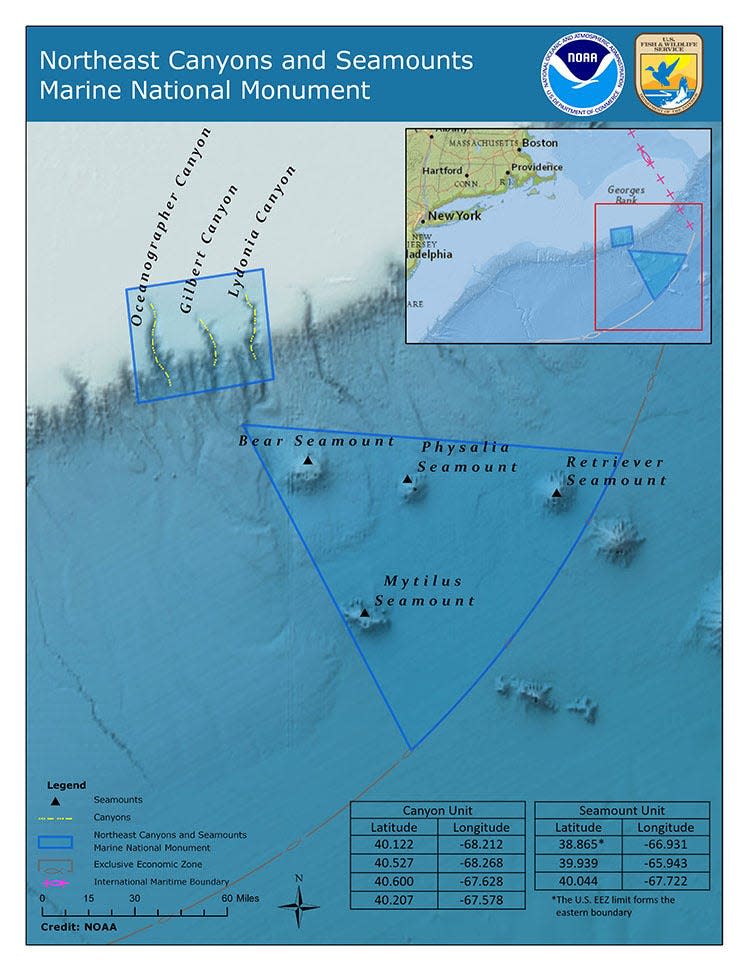
Pushing for full protection of the area, a delegation from the New England Aquarium in May briefed Congress on the importance of the marine monument as part of the 30x30 global movement and the national America the Beautiful initiative. In those initiatives scientists are calling for 30% of the planet’s and the nation's land, waters and ocean to be protected by 2030 "to stem biodiversity loss and build resilience against climate change," according to the New England Aquarium.
This month’s aerial survey of the Northeast Canyons and Seamounts preserve comes as President Biden announced plans for a new national monument — the Baaj Nwaavjo I’tah Kukveni Grand Canyon National Monument — to preserve more than 1,500 square acres just outside Grand Canyon National Park. It's Biden's fifth monument designation with an aim toward protecting areas of historic and scientific importance.
According to the New England Aquarium, the 30x30 and America the Beautiful campaigns aim "to protect biodiversity, foster climate mitigation and resilience, and ensure more equitable access to nature."
Squid and many species of whales
According to the National Oceanic and Atmospheric Administration, the undersea canyons and seamounts in the marine sanctuary "contain fragile and largely pristine deep marine ecosystems and rich biodiversity, including important deep sea corals, endangered whales and sea turtles, other marine mammals and numerous fish species." The area has a large population of squid, and attracts many species of whales, including endangered sperm whales and protected True's beaked whales.
Katherine McKenna, an assistant research scientist at the Anderson Cabot Center for Ocean Life, was part of the aerial survey team that flew over the monument area on Aug. 3.
"We spotted 737 animals, which includes five species of dolphins, fin whales, two species of rays, ocean sunfish, and a hammerhead shark," she said.
The observable animals, at the surface
There have been times, though, they've observed more than 1,000 animals on one trip, and those are just the animals observable at the surface.
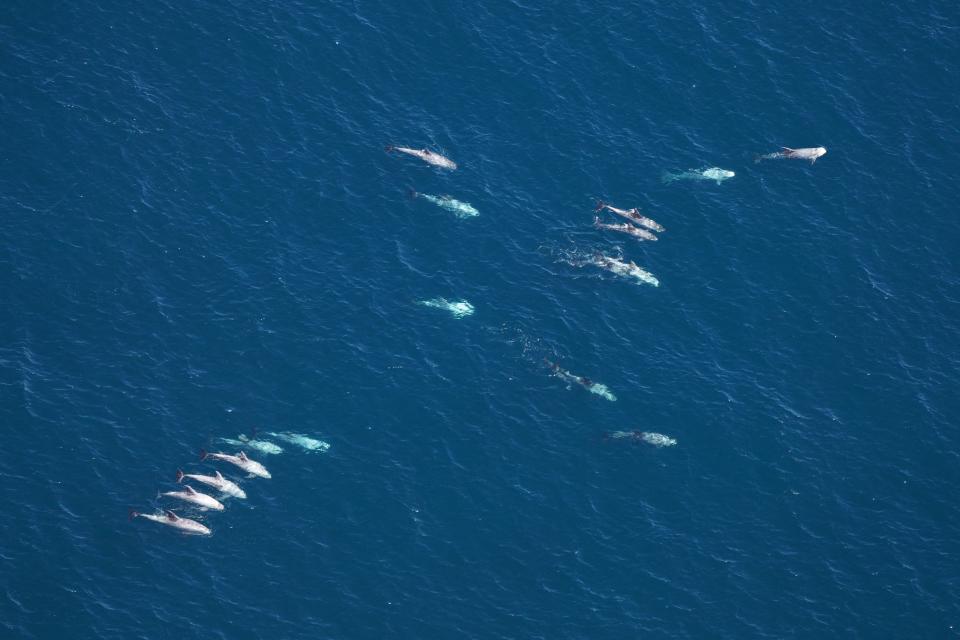
"We generally survey the Northeast Canyons and Seamounts Marine National Monument at least twice a year, but the number can vary based on weather conditions and funding," McKenna said.
It takes around an hour to get to the monument, and the researchers generally spend about four hours there. The survey covers the 941-square-mile canyons unit of the monument.
"All of the species we saw on this survey are typically seen at the monument on summer surveys, but some species that people might be surprised that we saw off New England are manta rays and Chilean devil rays," McKenna said.
The scientists observed three manta rays and two Chilean devil rays on the recent survey.
Rays and whale sharks appear in the summer following the Gulf Stream
"In the summer, we can see warmer water species in the monument, like rays and whale sharks that are following warm, productive water from the Gulf Stream and will feed in and around the monument," she explained.
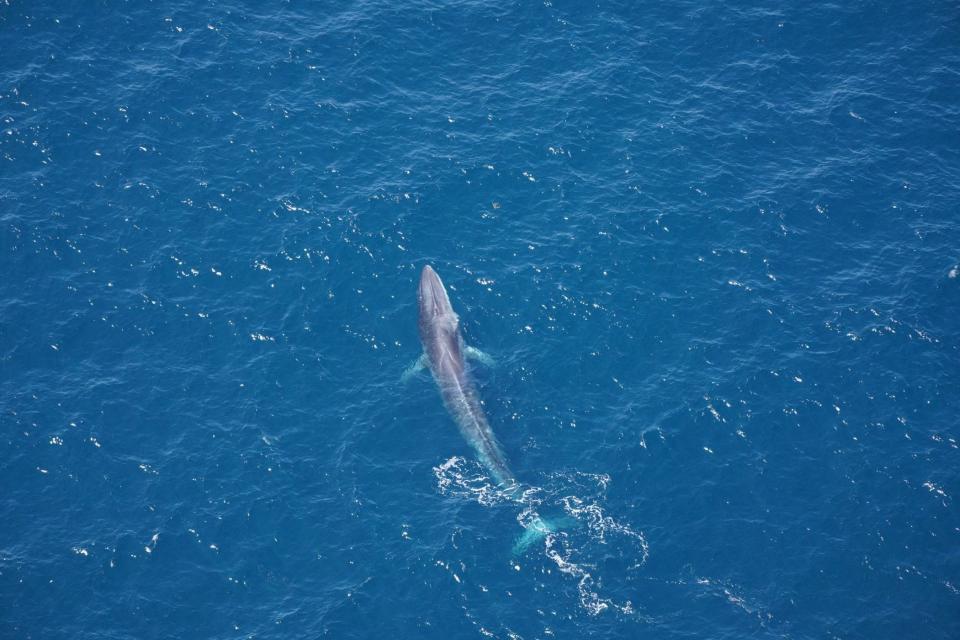
Another interesting sighting on the latest survey trip was a pod of 50 Risso’s dolphins and a pod of 12 bottlenose dolphins travelling together.
"Risso’s and bottlenose dolphins have been known to associate with each other but we don’t usually see the two species this closely together on our surveys," McKenna said.
The most common species spotted was the Risso’s dolphin, with 329 individuals documented this time around.
Squid attract the Risso's dolphins
"Risso’s dolphins prefer deep waters along the continental shelf and are among several cetacean species drawn to the productive monument waters to feed on their preferred prey of squid," she said.
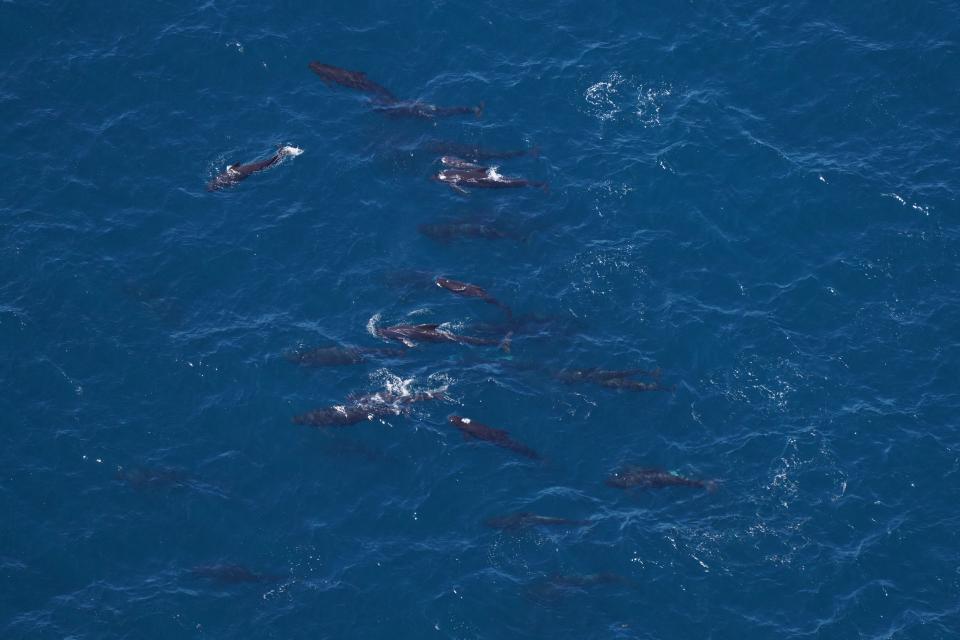
McKenna said the New England researchers are interested in documenting how climate change and rising ocean temperatures may be playing out in the monument area. The nearby Gulf of Maine is already recognized as one of the fastest warming water bodies on the planet
"Water in this area is warming, which will likely lead to species distribution changes," she said. "We haven’t done that analysis on our monument survey data yet but are interested in exploring this topic further as we continue to gather more data."
Heather McCarron writes about climate change, environment, energy, science and the natural world, in addition to news and features in Barnstable and Brewster. Reach her at hmccarron@capecodonline.com, or follow her on Twitter @HMcCarron_CCT
Thanks to our subscribers, who help make this coverage possible. If you are not a subscriber, please consider supporting quality local journalism with a Cape Cod Times subscription. Here are our subscription plans.
This article originally appeared on Cape Cod Times: Scientists survey marine preserve off Cape Cod as fishing ban nears

